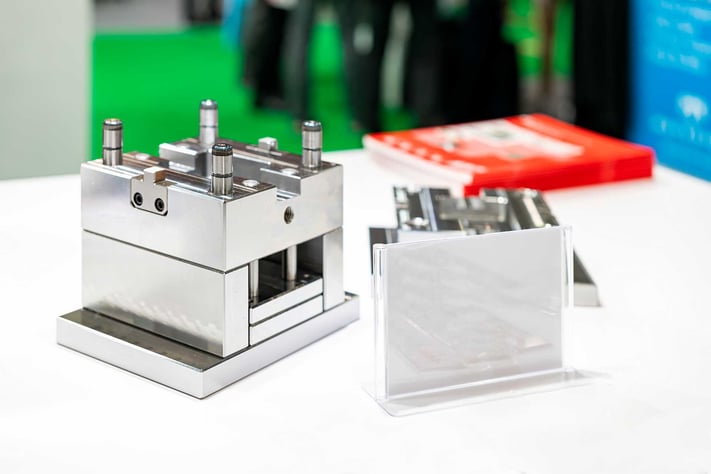
Everything You Need to Know About Custom Injection Molding
When you require large volume productions of custom parts, injection molding is the key manufacturing process for you. While this production method is not ideal for singular or one-off custom-designed products, injection molding is perfect for projects where the same component needs to be manufactured thousands of times over. Learn more about this highly useful manufacturing method below and discover whether it is a process you should invest in.
How Does Custom Injection Molding Work?
The entire injection molding process can be repeated very quickly, often in under a minute per part. To operate this fast process, we need a mold and a machine.
The Mold
The mold, also called a tool, is a reflection of the product or part concept. It is generally built in two halves that meet in the middle, called the parting line. Inside the mold, part geometry, texture or polished surfaces are produced in negative form. This way, when plastic material flows into the tool and resolidifies, the result is the designed part.
There is more to an injection mold than what you see in the final part. First, molten material must flow into the cavity, so there is a material delivery system. There are several different options depending on desired cycle time, cosmetic needs, and dimensional conformity. The wrong one can be tough to overcome, so it is important to rely on professional help. Second, injection molds also have an ejection system to kick the part off the tool when it opens so that we can be ready for the next cycle. Third, injection molds also have a cooling or temperature control system that consists of pathways through the mold. In these pathways, a circulating fluid maintains the tool at a constant temperature so that the process used for the first part is the same as the millionth part.
Most often, the injection mold is your asset for your exclusive use. Injection molds are a one-time cost, and they can be the largest part of initial project costs. However, the capabilities of a well-made tool can produce consistent, inexpensive parts for a long time to come.
Injection Molding Machine
The injection molding machine is a piece of capital equipment. Injection molding machines can be configured a variety of ways, but the three most important aspects to consider for your part: mold/tool size, shot size, and clamping tonnage.
Mold size is fairly simple – your mold must fit into the machine, so you can consider tie bar spacing and min/max die height. The mold will split at the parting line and travel in a straight line held in alignment by 4 guides, called tie bars. Your tool will need to fit both horizontally and vertically between them. In addition, each machine will have a minimum and maximum die height (or thickness) that it can accept as it opens and closes.
Shot size is the next consideration as you will generally want a machine where the volume of plastic that enters your tool is between 20-80% of the barrel capacity. What’s a barrel? Plastic resin, typically in hard pellet form, feeds into one end of a long metal cylinder called the barrel on the injection molding machine. Inside that cylinder is an auger (or screw) that spins and feeds those pellets around and over the screw flights. When they reach the front, they have turned into a melted pool of plastic waiting to be injected into the mold at the next cycle.
Clamping tonnage is the last consideration. When plastic enters the cavity, it is under extreme pressure – often as high as 25,000 psi. When this pressure is applied over the surface area of your part, it results in a force that will want to split your mold open at the parting line. To keep it closed, the machine applies a clamp tonnage. Using too little tonnage will “blow the mold open” and give you parting line flash, which is a lip of plastic where the two mold halves meet. On the other hand, using too much tonnage can damage your tool and/or the machine.
Your product and mold should be matched to the right machine to produce the best product. Because of the expense of the injection molding machines, many businesses choose to outsource injection molding to a custom plastic injection molder who will have a variety of machines suitable for different products.

